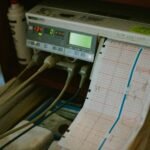-
B Pharmacy First Semester Pharmaceutics Notes
B Pharmacy First Semester Pharmaceutics Notes Welcome to the first semester of B Pharmacy! Our “Pharmaceutics Notes” are here to help you get started with your studies. These notes cover all the important topics you’ll need to know, from the basics to more advanced. Click on the links for each unit below to find easy-to-understand
-
Prescription
Introduction Prescription is written order from registered medical practioner, or other properly licenced practitioners to a pharmacist to compound and dispense a specific medication for the patient. Prescription writing stands as a cornerstone in the practice of medicine, serving as the crucial link between healthcare providers and patients access to appropriate mediations. In this article
-
Semisolid dosage forms
Semisolid dosage forms Semisolid dosage forms are medications that are neither solid nor liquid, but somewhere in between. They are typically applied to the skin, nasal mucosa, cornea, rectal or vaginal tissue, buccal tissue, ear, or urethral membrane. Examples include ointments, pastes, creams, emulsions, gels, and rigid foams. They contain one or more active ingredients
-
Pharmaceutical incompatibilities
Pharmaceutical incompatibilities Pharmaceutical incompatibilities refer to situations where two or more substances are mixed or come into contact, resulting in a negative effect on the quality, stability, efficacy, or safety of one or more of the substances. Incompatibilities can occur between different drugs, drug components, excipients, or drug delivery systems. It’s important to identify and
-
Suppositories
Suppositories A suppository is a solid medical preparation in a roughly conical or cylindrical shape, designed to be inserted into the rectum or vagina to dissolve. It’s a dosage form used to deliver medications by insertion into a body orifice, where it dissolves or melts to exert local or systemic effects. It’s a solid but
-
Emulsion
Emulsion Emulsion is a biphasic liquid disperse system where the dispersed phase is composed of small globules of a liquid distributed throughout in an immiscible vehicle. In emulsion terminology, the dispersed phase is referred to as the discontinuous or internal phase, and the dispersion medium is the continuous or external phase. The diameter of the
-
Suspensions
Biphasic liquid dosage forms Biphasic liquid dosage forms such as suspensions and emulsions, are pharmaceutical preparations that consist of two distinct, immiscible phases. These two phases can be different according to their composition, density, and solubility. biphasic liquids are of two types, such as suspensions and emulsions, consisting two immiscible phases. In this article we
-
Monophasic Liquids
Monophasic liquids Monophasic liquids in pharmacy are pharmaceutical formulations that consist of a single, homogenous phase. They are typically comprised of a solvent, one or more dissolved active pharmaceutical ingredients (APIs), and various excipients. These liquids represent a true solution, which is a clear, homogeneous mixture prepared by dissolving a solid, liquid, or gas in
-
Liquid Dosage Forms
Liquid dosage forms Liquid dosage forms are pharmaceutical preparations in a liquid state that are administered orally, topically, or by injection. They contain a mixture of active drug components and non-drug components (excipients) dissolved or suspended in a suitable solvent or mixtures of solvents. They are designed to provide the maximum therapeutic response in a
-
Powders (BP103T)
Introduction In pharmaceutics, a powder is defined as a dry, solid substance composed of finely divided drugs, with or without excipients, intended for internal or external use. It is a solid substance in a finely divided state. Powders represent one of the oldest and most conventional dosage forms. They were originally found to be a
Search
Recent Posts
- Treadmill Test (TMT): Purpose, Procedure, Indications, Interpretation, and Clinical Significance
- 2D Echo Test (Echocardiography): Uses, Procedure, Normal Values, Cost, and Clinical Importance
- The Ultimate Guide to Glucometers: Types & Uses Explained
- Mounjaro Injection (Tirzepatide): Uses, Dosage, Benefits, Side Effects & more
- Benefits of Walking for Heart and Diabetic Patients
Categories
- Biochemistry
- Biostatistics
- Biotechnology
- Blogs
- Chemistry
- Community Pharmacy
- Diagnostic tests
- Disease & Conditions
- Drug Index
- Featured Blog
- Hospital Pharmacy
- Human Anatomy And Physiology
- Inorganic Chemistry
- Lifestyle & Wellness
- Medicinal Chemistry
- Microbiology
- Miscellaneous
- Novel Drug delivery Systems
- Organic Chemistry
- Pathophysiology
- Pharma Instruments & Devices
- Pharma News & Updates
- Pharma Updates
- Pharmaceutical Analysis
- Pharmaceutical Jurisprudence
- Pharmaceutics
- Pharmacognosy
- Pharmacology
- Pharmacy
- practice mcq
- Previous Question Papers
- Social Pharmacy
- Study Material
Archive
- December 2025 (4)
- November 2025 (1)
- October 2025 (1)
- September 2025 (7)
- August 2025 (7)
- July 2025 (6)
- June 2025 (9)
- May 2025 (9)
- April 2025 (10)
- March 2025 (13)
- February 2025 (13)
- January 2025 (20)
- December 2024 (48)
- November 2024 (49)
- October 2024 (64)
- September 2024 (62)
- August 2024 (58)
- July 2024 (56)
- June 2024 (25)
- May 2024 (17)
- April 2024 (19)
- March 2024 (21)
- February 2024 (18)
- January 2024 (24)
- December 2023 (13)
Tags
biochemistry bpharmacy third semester Construction free practice mcq inorganic chemistry microbiology microbiology mcq pathophysiology Pharmaceutical Engineering pharmaceutics Pharmacology pharmacy practice mcq physical pharmaceutics physical pharmaceutics 2 practice MCQ for govt pharmacist exam





